Safety in the Laboratory

Safety in the Laboratory |
 |
Risk of burns due to radiation with special danger for the eyes UV light has a carcinogen potential by modificating the bases of the DNA (Thymin-dimers) Safer than UV illumination (254 ≤ 312 ≤ 364 nm) is to use dark reader (400-500 nm). |
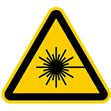 |
| Always use safety glasses or a face protecction Never expose yourself directly to UV light: Use gloves and a laboratory coat |
 |
Isolating DNA from a agarose gel: Additional risk of intoxication by ethidium bromide → It is highly recommended to use a dark hood in combination with a UV-transilluminator, which turns off the UV light on opening the access door → remember, the UV light also damages the DNA sample! → suitable gloves for working with EtBr are made from nitrile Sterilizing surfaces (e.g. Biological Safety Cabinet): → close the front screen completely and leave a sign → UV bulbs have a limited lifetime: their efficiency shlould be checked regulary |
 |
Ultrasonics damage the hearing - slowly but surely |
|
Always use ear protection It is better to use ultrasonic equipment in a special container or a separate room and leave a sign |
 |
Usually used for disintegration of cells, degasing of solvents, dissolving substances or cleaning surfaces. Depending on the work (e.g. cell desintegration), samples are getting hot and can liberate aerosoles (=> use extraction hood) |
 |
Tubes for water, other liquids, natural gas or special gases Risk of breakage of a valve and fast uncontrolled escape of liquid/gas → damage due to pressure, fright or the escaping liquid/gas Fissure of tube and slow escape of gas → damage due to afixiation or explosion (depends on escaping gas) |
|
Use only adequate hose for the respective gas (e.g. for the Bunsen burner) The gas flow has to be interrupted at the principal gas outlet and NOT at the Bunsen burner; Bunsen burners, which can interrupt the gas flow directly are not allowed |
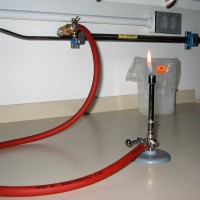 |
Use hose clamp to fix hose to a tube to avoid slip off: - gas to burner → risk of gas escape (and explosion) - water to cooling column → risk of water damage to laboratory → risk of uncontrolled reaction (w/o cooling!) |
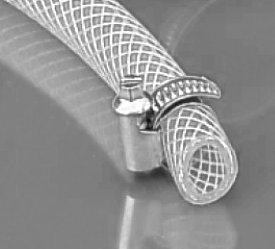
|
| The colour code for fixed tubings within laboratories vary between different countries. In any case, complementary information is necessary: - Type of Risk: toxic, flammable, explosive, irritating, corrosive, reactive, biological hazard, high temperature, high pressure - Complete name and symbol or chemical formula - Flow direction |
|
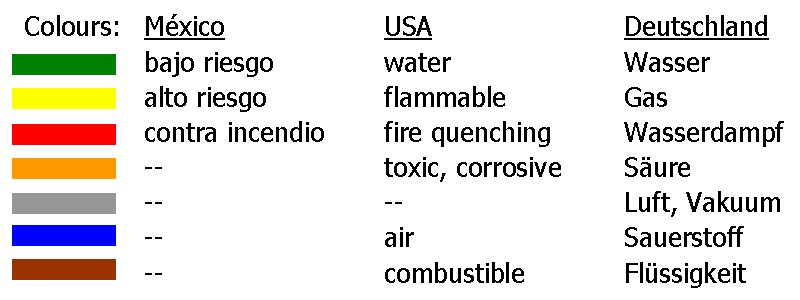
Risk of implosion liberating splinter of glass Already a water-jet vacuum pump has power: up to 1 kg por 1 cm2 |
|
Always use a face protection It is better to use a special protective screen, e.g. the sliding front window from an extraction hood |
 |
Before applying a vacuum you should inspect the container for scratches or cracks Do not apply vaccum to fragil containers - e.g. no Erlenmeyer Suitable flasks are thick walled, e.g. Büchner funnel/flask for suction filtration Do not heat flasks under vacuum at only one side The working order for a destillation is: apply vacuum - heat up - destillation - cool down - liberate vacuum When using a vacuum pump, use a trap on the suction line to prevent liquids from being drawn into the pump |
|
Risk of electric shock |
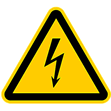 |
Inspect equipment, cables and connections before using them Use only functional plugs/connections Do not over-connect extensions Unplug only by pulling at the plug itself, never at the cable Revisions of equipment and cables can only be done by experts |
  |
